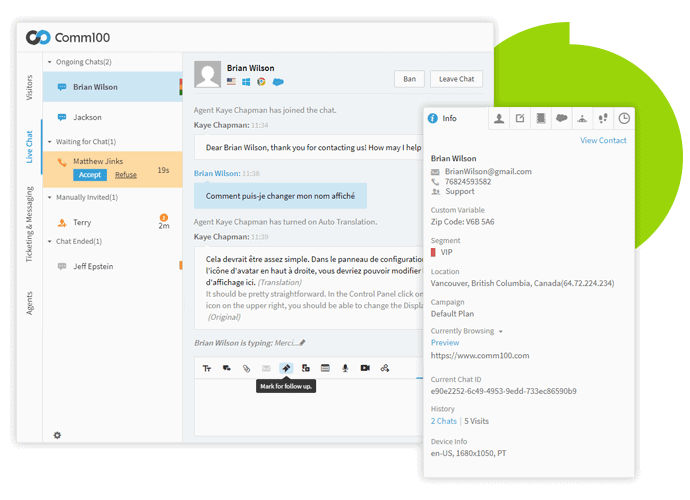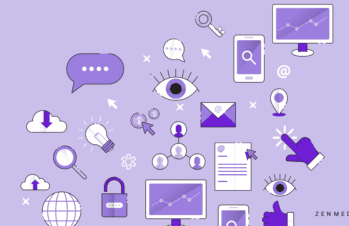It should come as no surprise that the COVID-19 pandemic has upended all consumer behavior. According to CNBC, forced lockdowns instantly increased online shopping, growing it by more than 31 percent between Q1 and Q2. With layoffs and furloughs, budget concerns immediately cut back on frivolous spending, and in-store shopping ground to a halt.
It should also come as no surprise that the same forces that acted upon regular consumers affected B2B buyer behavior. Ten months into the pandemic, what began as reactions to a crisis are now de rigueur. And like it or not, for B2B buyer behavior, we can expect that some of these new shopping habits are here to stay.
So what’s changed, and what can we expect to stick around into 2021 when it comes to COVID-related B2B buyer behavior? In this guide, we’ll look at TK shifts that every marketer should be aware of.
The Future is Digital
People have been saying “the future is digital” for years, but nowhere has this prediction become so real than in 2020. With quarantine measures locked down companies, forcing staffers to work from home and the supply chain into a tailspin, smart B2B companies quickly pivoted to move sales online.

And if McKinsey’s research is correct, this shift is likely to stick around. The data firm reports that the big move to virtual sales “can help sales organizations lower their cost per visit, extend their reach, and significantly improve sales effectiveness—while delighting customers who are demanding these new ways of interacting stick long term and who are likely to reward suppliers that do it well.”
That’s good news for early adopters but should also serve as a warning to companies who shrugged off the shift to digital. The time to hesitate has passed. If you don’t build out your online experience soon, you could be left behind in 2021.
The Rise of Live Chat
By March of 2020, in-person meetings were out, forcing companies to rethink how they handled sales. One of the most effective tools that helped save it? Live chat.
Some might say chatbots were their company’s saving grace this year.
Take, for instance, Shapermint. According to Digital Commerce 360, the shapewear company turned to chatbot technology to answer simple customer questions and it paid off. Instead of hiring people to do the work, the chatbot could easily handle simple queries and saw a surge of 233% to 50,000 chats per month in Q2.

But B2C wasn’t the only sector that benefited from live chat last year. According to the Silicon Republic, the tool saw enormous growth in B2B in 2020. “For one communication provider, Moneypenny, live chat was up 206 percent in the automotive sector, 215 percent in large businesses, and 118 percent in legal firms from April to May 2020,” Silicon Republic reports.
Why the significant increase in B2B live chat programs? Self-service automation helps these companies by:
- Giving customers options for getting in touch
- Generating useful lead information
- Helping streamline processes
- Providing flexible responses that aren’t dictated by business hours
- Giving B2B an enormous cost savings
Tighten Purse Strings
According to McKinsey, one of the most apparent fallouts of the pandemic has been budget tightening within B2B organizations. When the virus hit America, companies across the country immediately had to consider their survival and a big part of that involved adjusting spending to make it through the year.
The stats are staggering. According to Forbes:
- Two-thirds of B2Bs from the tourism and hospitality category said they saw substantial disturbance to their business.
- Others saw hard hits too, including a 60% disturbance to personal services, 52% to education, 46% to wholesale and 49% to manufacturing.
That said, some B2B companies actually saw spending growth, especially as it related to software.
Fifty-six percent of respondents to a TrustRadius poll said their tech spend would “either return to previous levels or increase in 2021.”
The Evolution of How B2B Buying
Just how B2B sales are made is a matter of looking at the online content driving these purchasing decisions.
Amidst the pandemic, 33% of buyers spent more time researching products now than before COVID, TrustRadius reports. Now pair that with the fact that the software review site also found that this year “25% of buyers spend less time talking with vendor representatives than they did before the pandemic.”
What does all of that information mean? It means companies need to think about, develop, and strategize the content it’s giving B2B buyers about its products and services because, in this new normal, buyers are spending a lot more time reviewing it.
The Online Experience Matters
The days of being the face of a company in B2B interactions may be gone. Sure, Zoom sales are a thing, but with health restrictions likely to linger well into 2021 — even with the vaccine — the data suggests that having a great online experience will result in sales moving forward.
Resources Pros reports that a better digital purchasing experience is a top driver of change in vendor preferences.
No longer will just a solid landing page for a B2B business suffice.
Walking a customer through the purchasing process in a smooth, easy to understand digital space is what will lead to sales, and providing potential customers with smart, sophisticated, persuasive content is key.
Instituting tools like the aforementioned Live Chat is a good first step, but it doesn’t end there. Clever content marketing cannot be ignored.
Credibility and Trust Remain Paramount
Just as B2C has seen a shift in buyers wanting to see authenticity in the brands they invest in, and the same can now be said for B2B. Companies don’t just want to be a target. They want to be on the same team as a vendor working toward shared goals.

This means continued changes to B2B marketing. Forrester forecasts that this shift will mean that B2B not just looks at growing customers but invests in maintaining customers with post-sales initiatives that build B2B relationships.
In addition, Forrester projects this will also mean increased use of empathy in marketing campaigns that seek to build greater trust and credibility.
Sensitivity Pays Off
If there’s one thing this year has shown businesses, it’s the value of deploying sensitivity. That goes for B2C and B2B. Customers can’t stomach being overwhelmed with sales tactics in this trying season. B2Bs would do well to react with a little more restraint that shows customers an understanding of the struggle this year has wrought.
Case in point, Gartner reports that “marketing emails acknowledging the pandemic saw a 41% increase in open rate, while standard email open rates decreased overall.”
That is to say, just stating the obvious and being honest with customers can provide an enormous amount of goodwill that could lead to greater brand loyalty and, with any luck, eventual sales.
But that kind of strategic, sensitive marketing strategy takes tact. It requires smart messaging that feels authentic. It might not be something your company feels comfortable writing on its own. That’s where Zen Media comes in.
With a team of digital content strategists, writers, and marketing experts, Zen understands how to handle B2B messaging in these difficult times. Rather than bombard customers with promotions and sales tactics, they can navigate the subtle intricacies of lacing trust and compassion into content that will show your clients just how much your company cares.
Ready for some help? Reach out to Zen Media to learn more.





